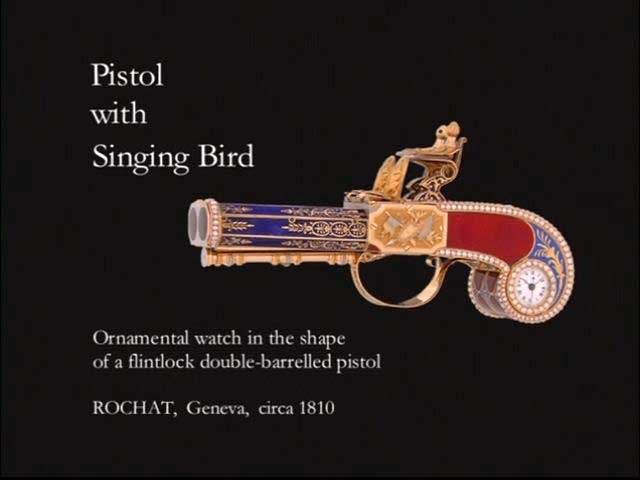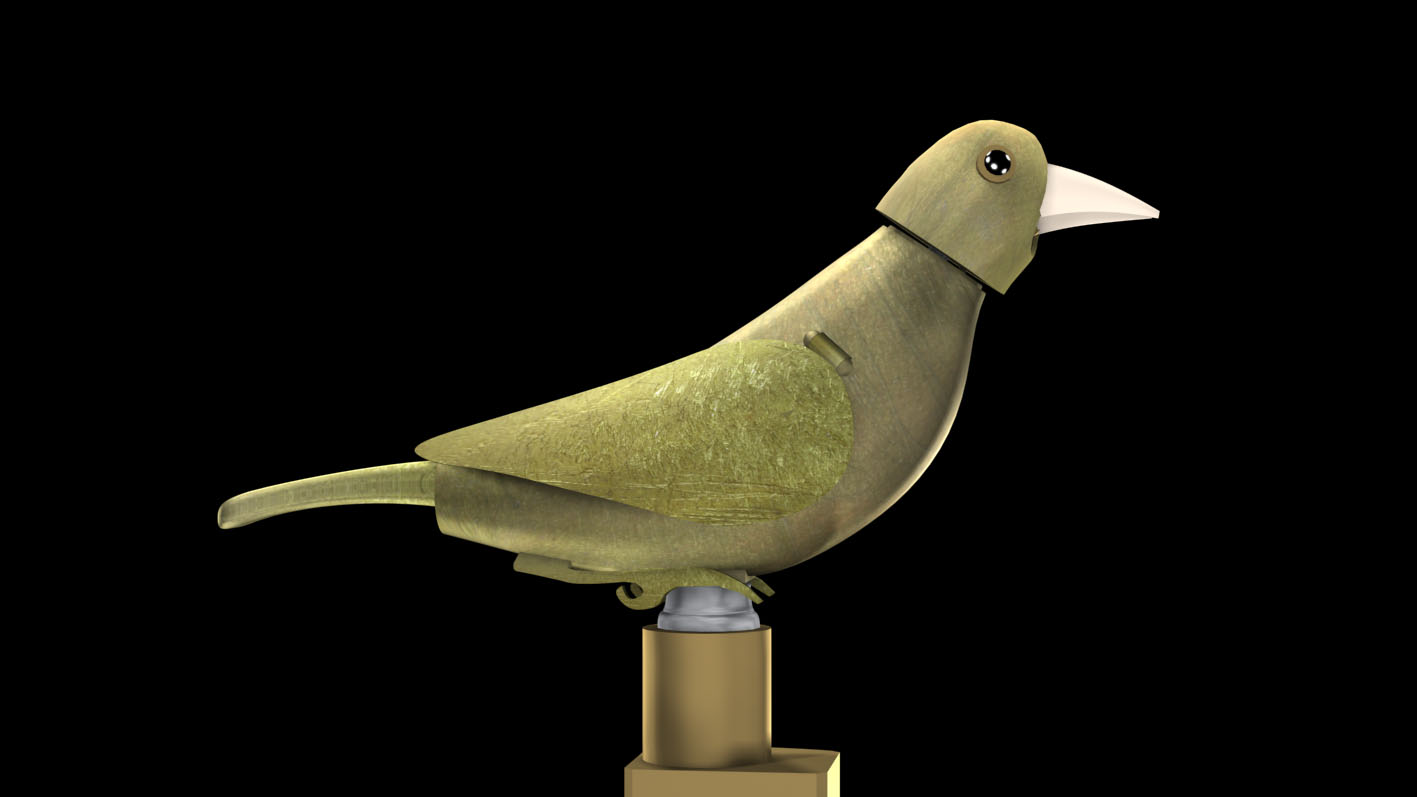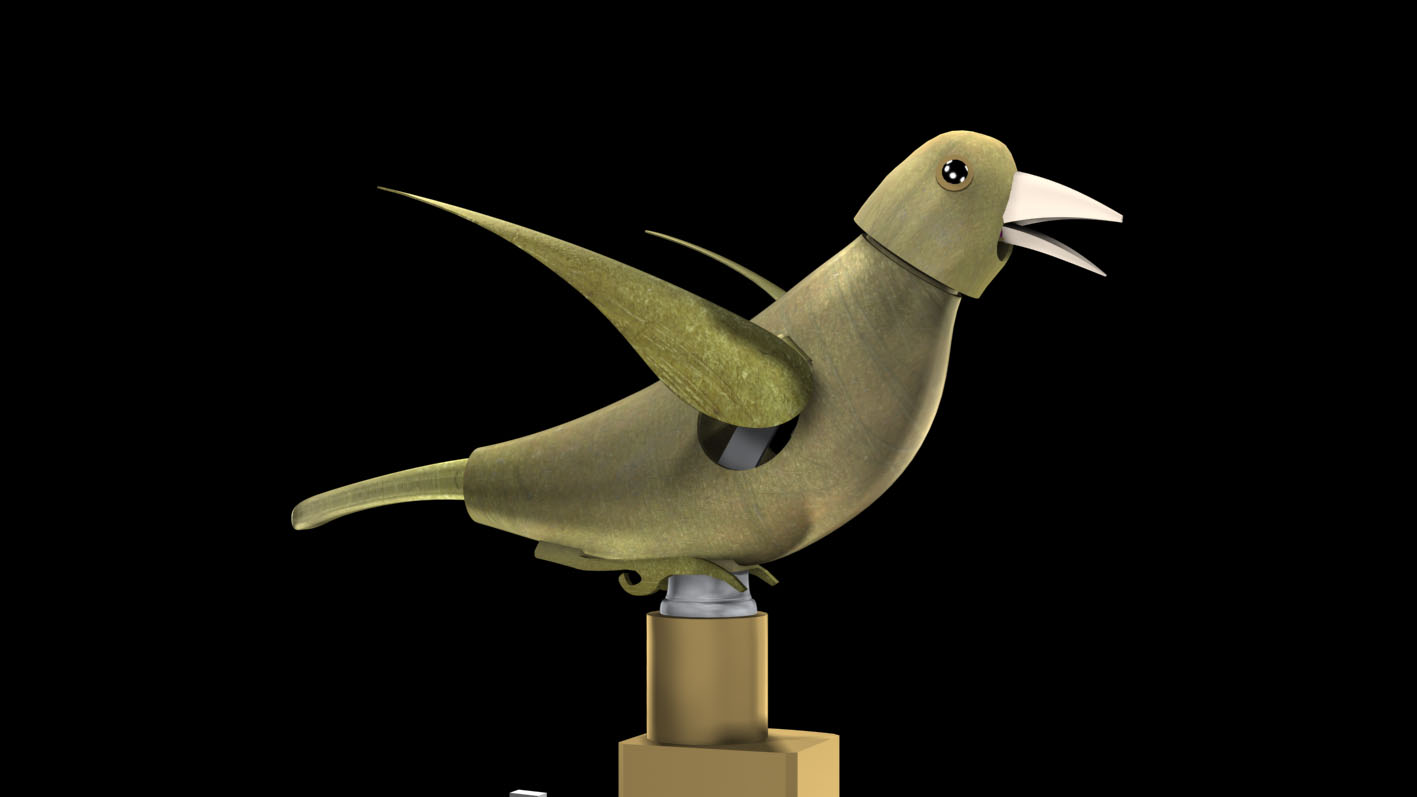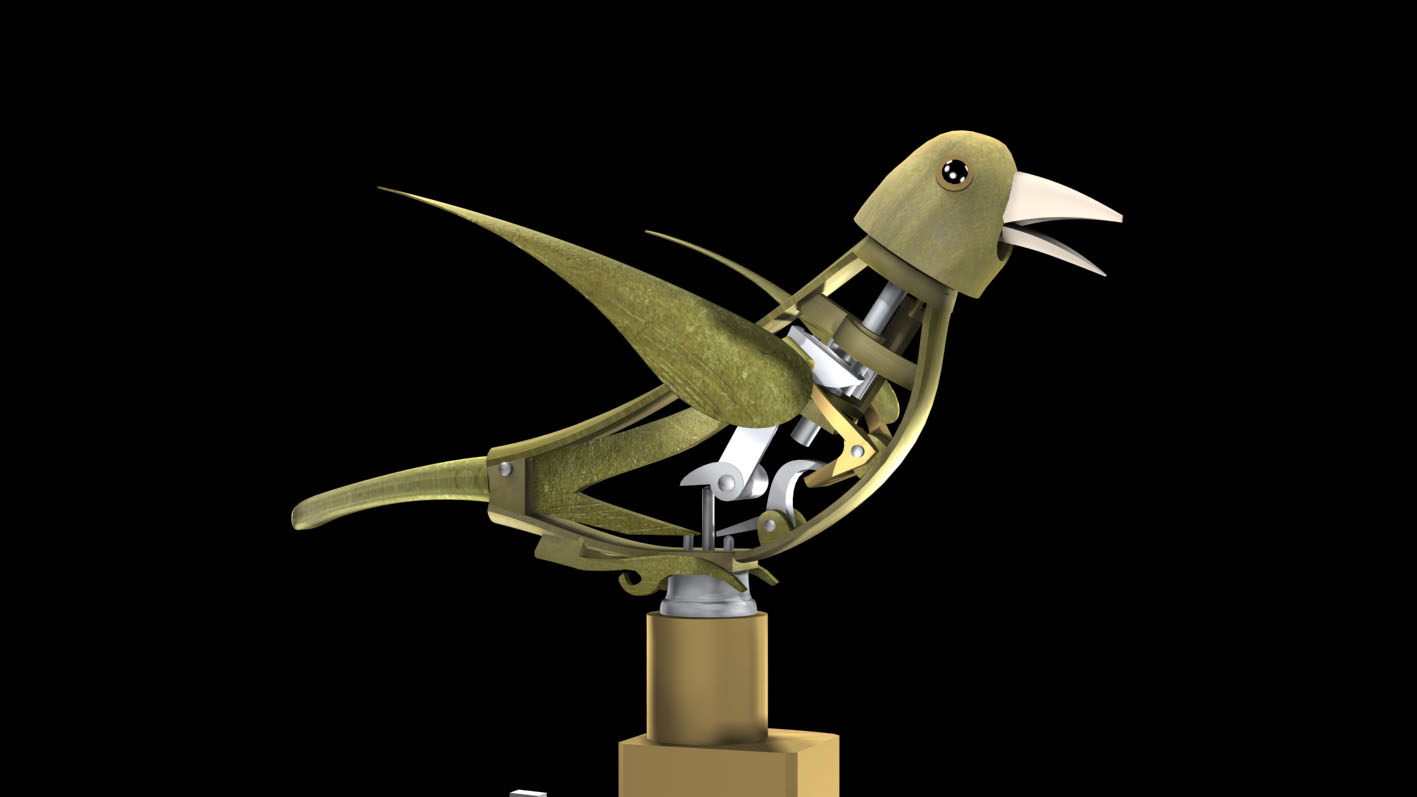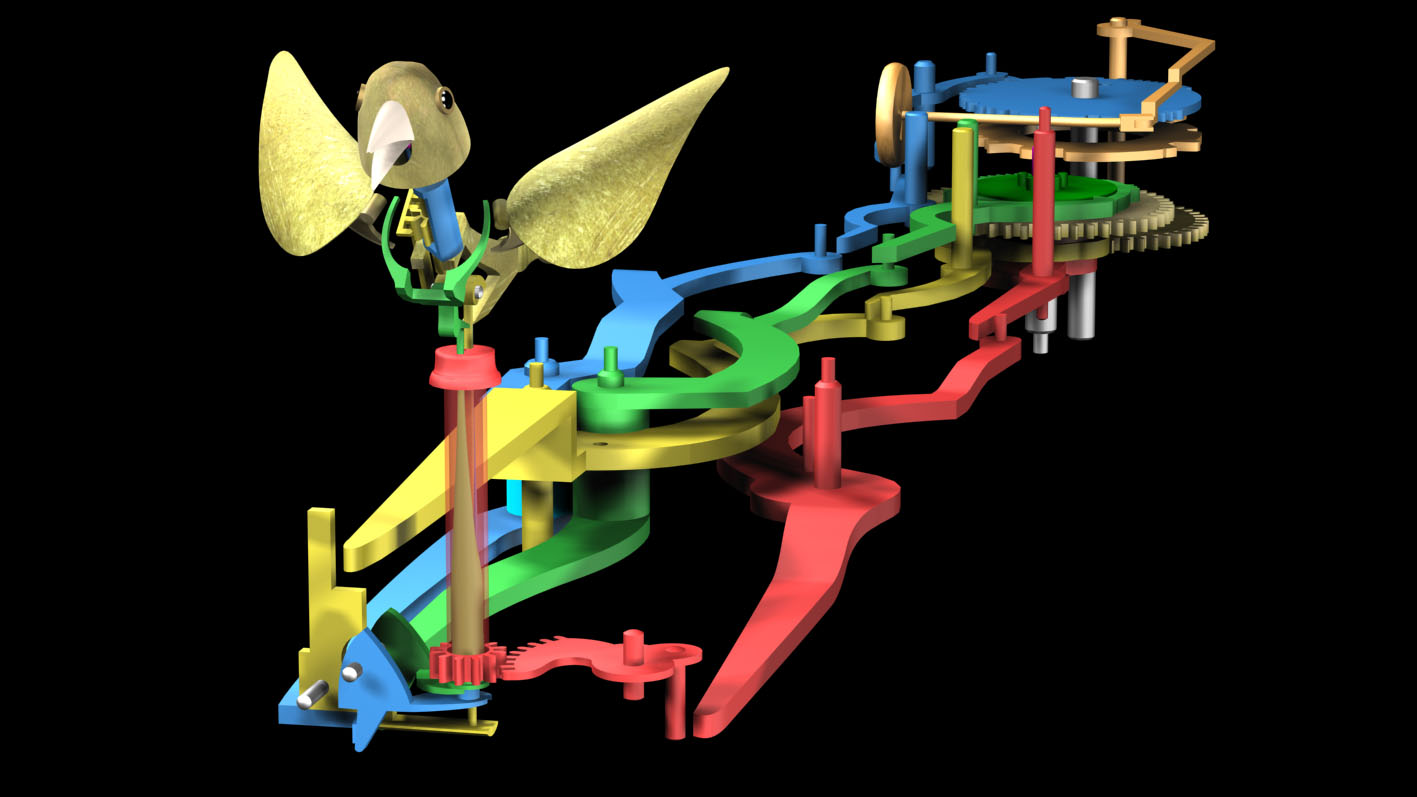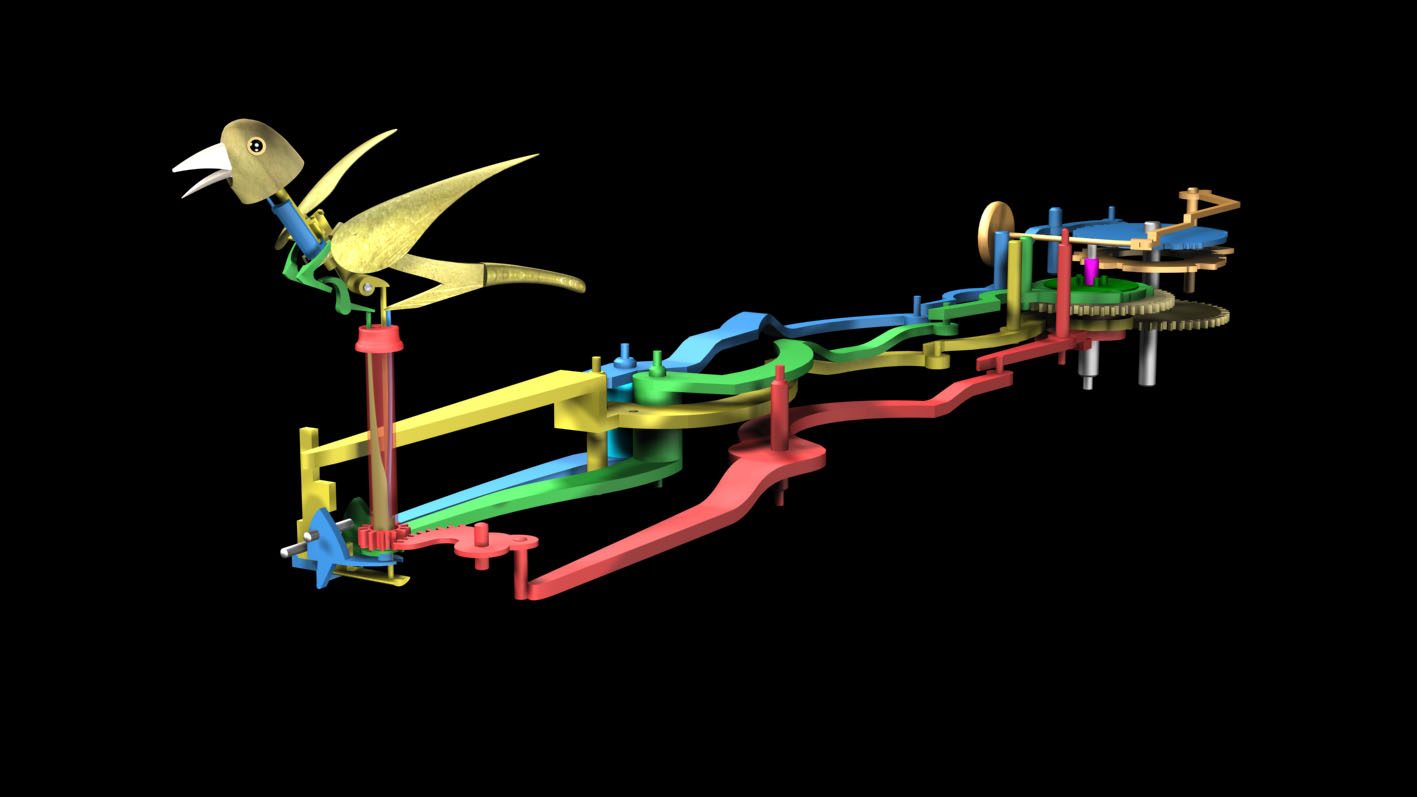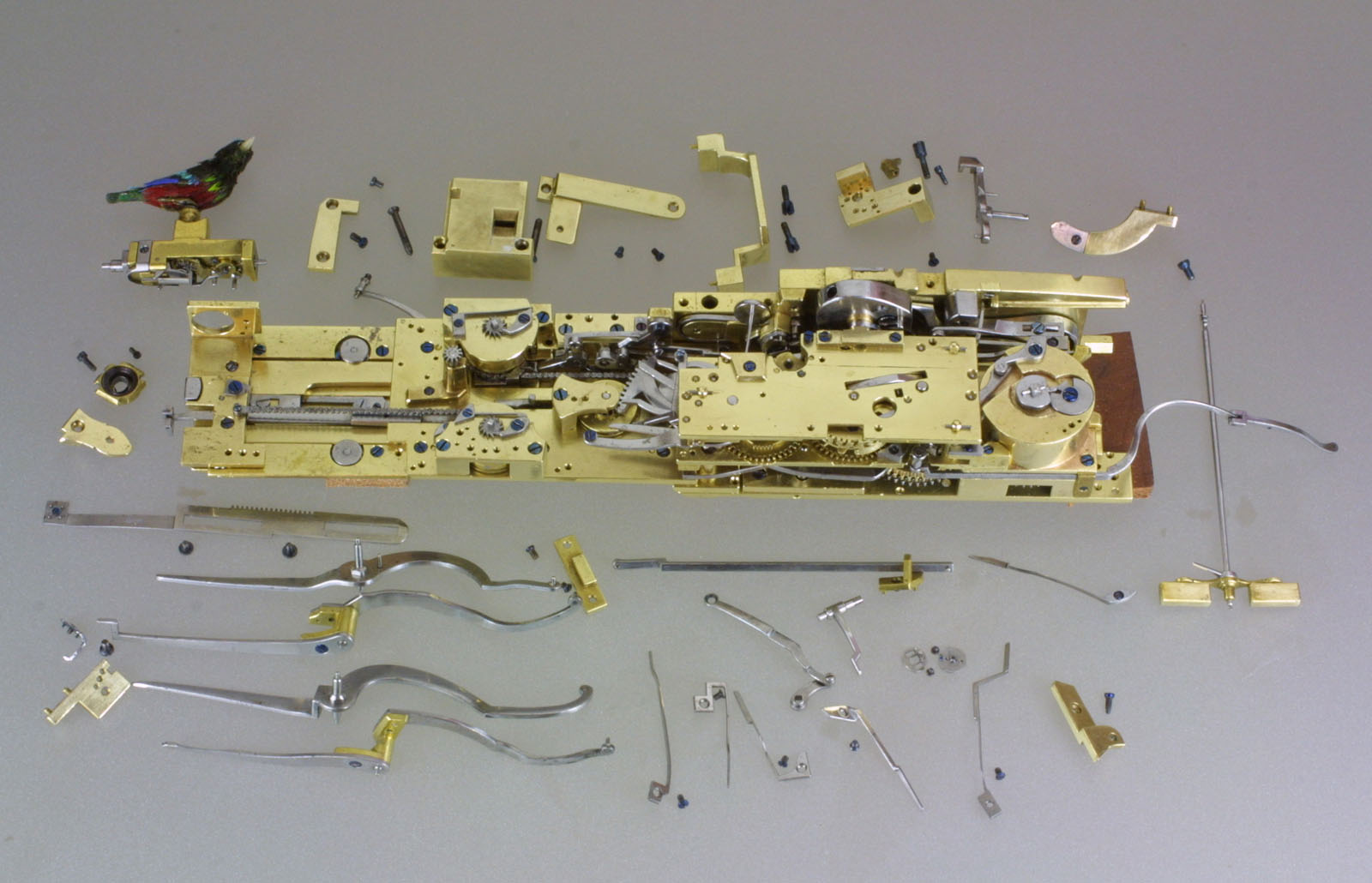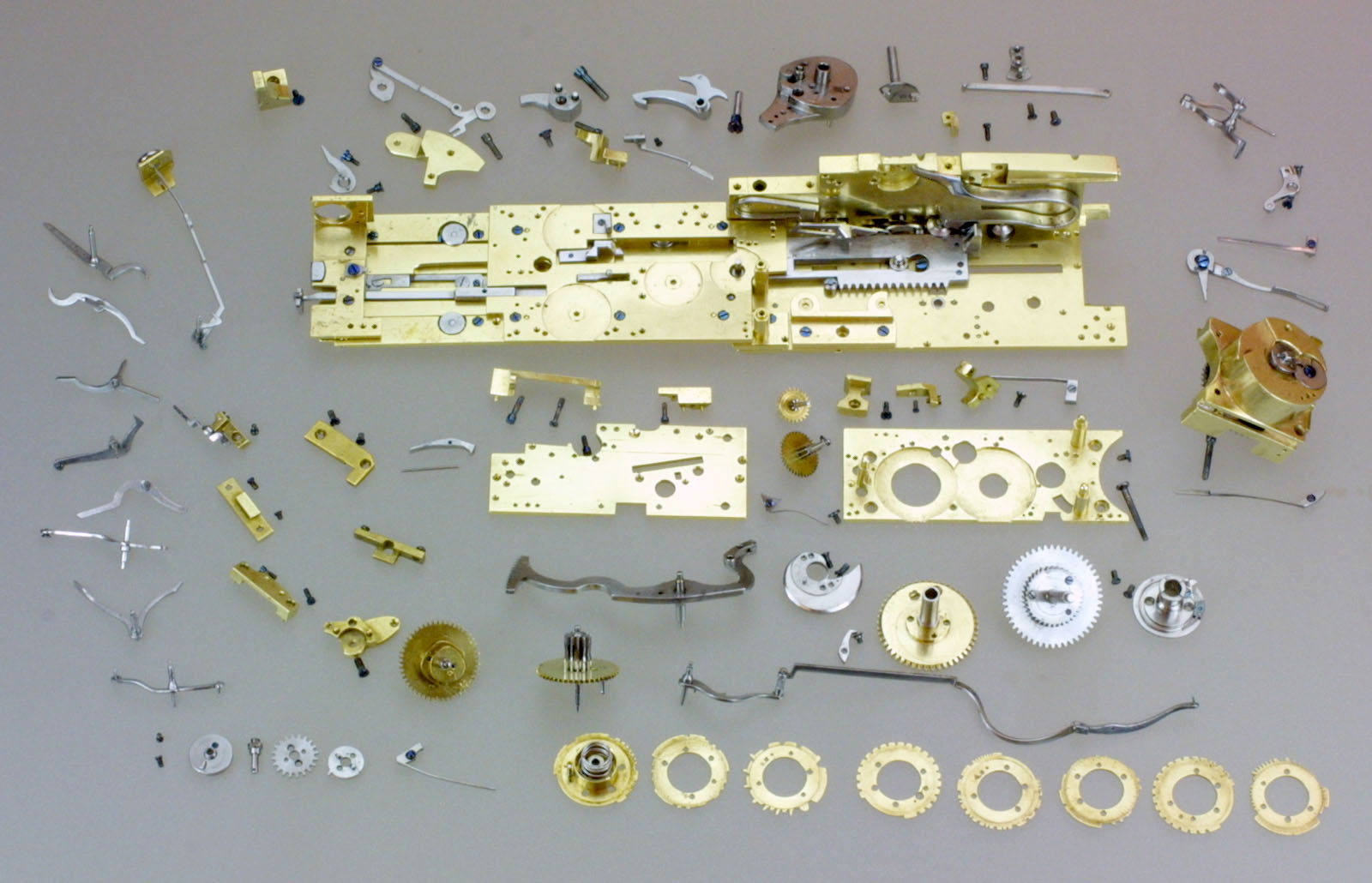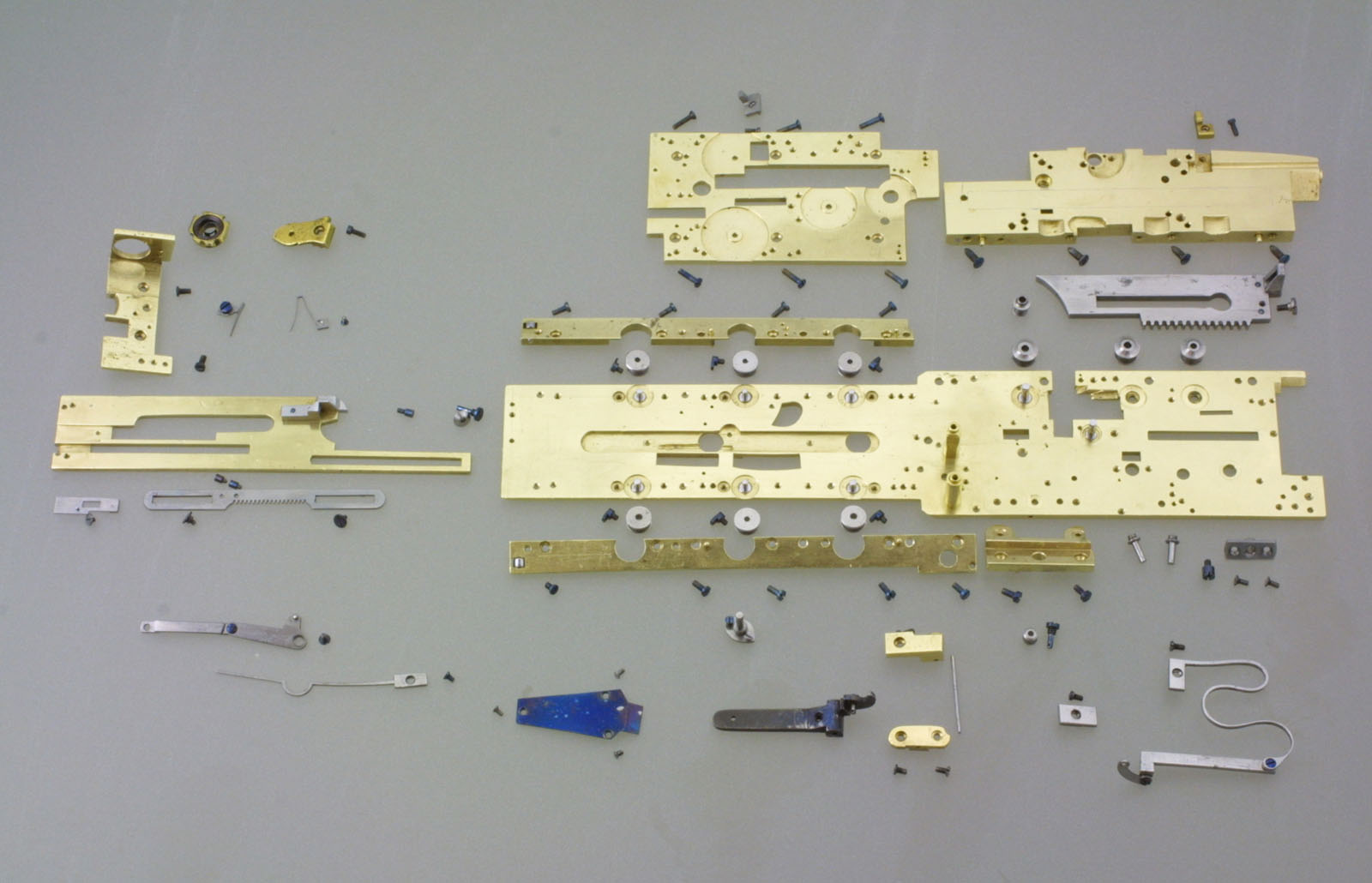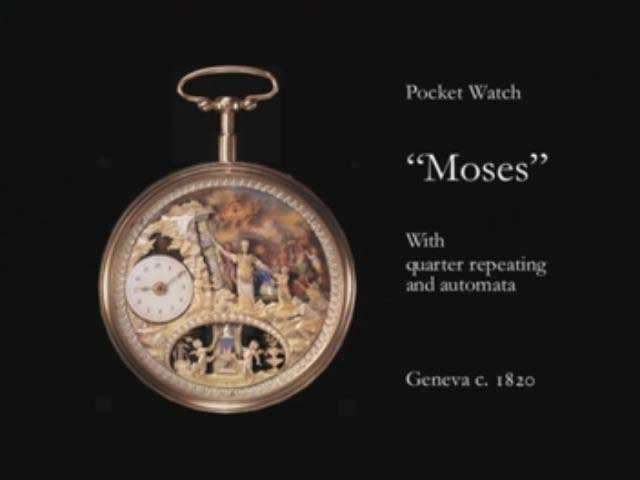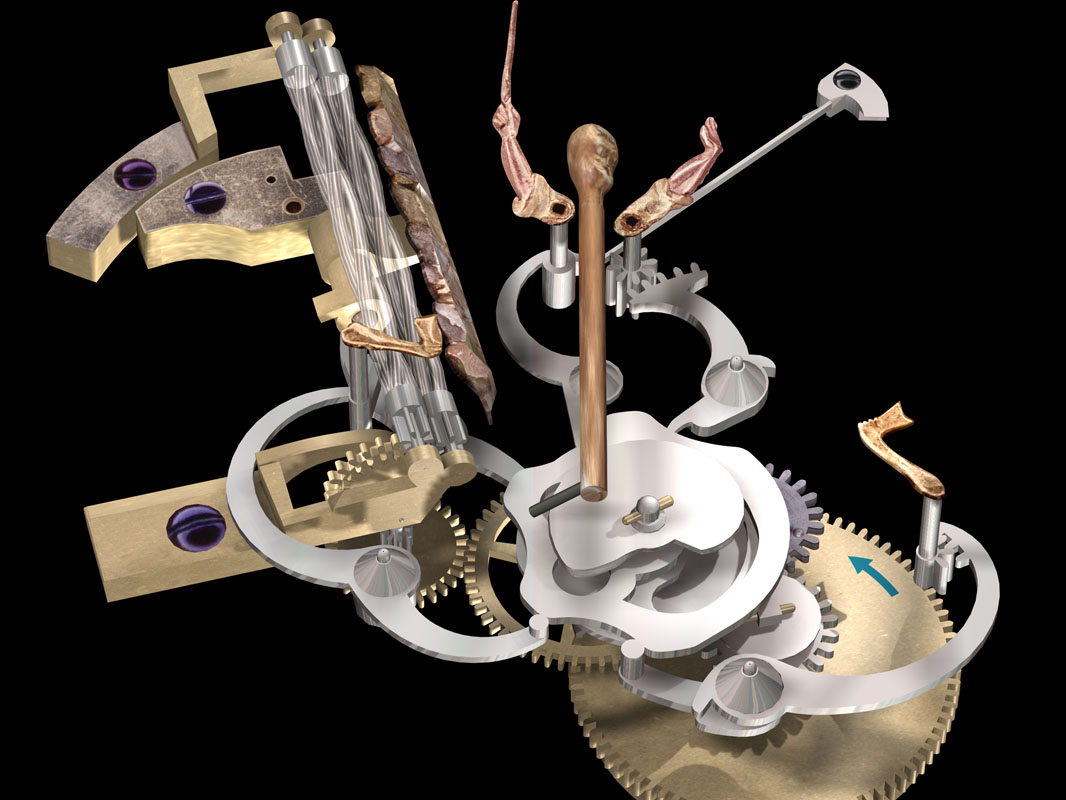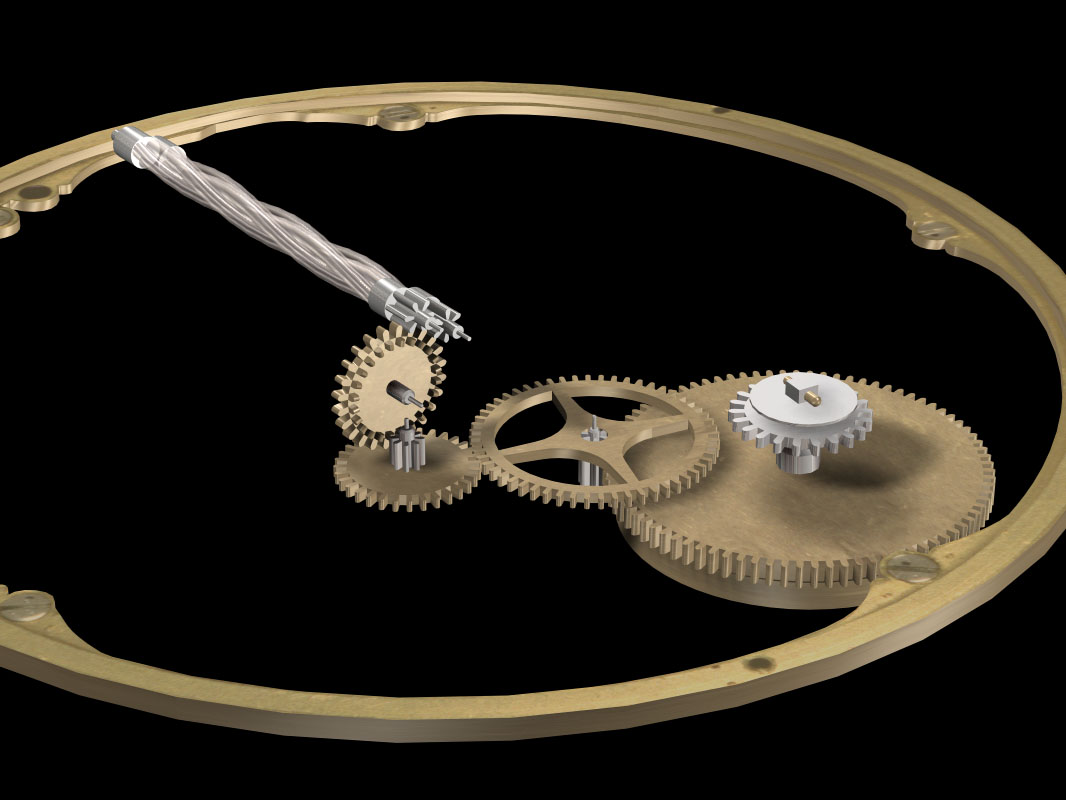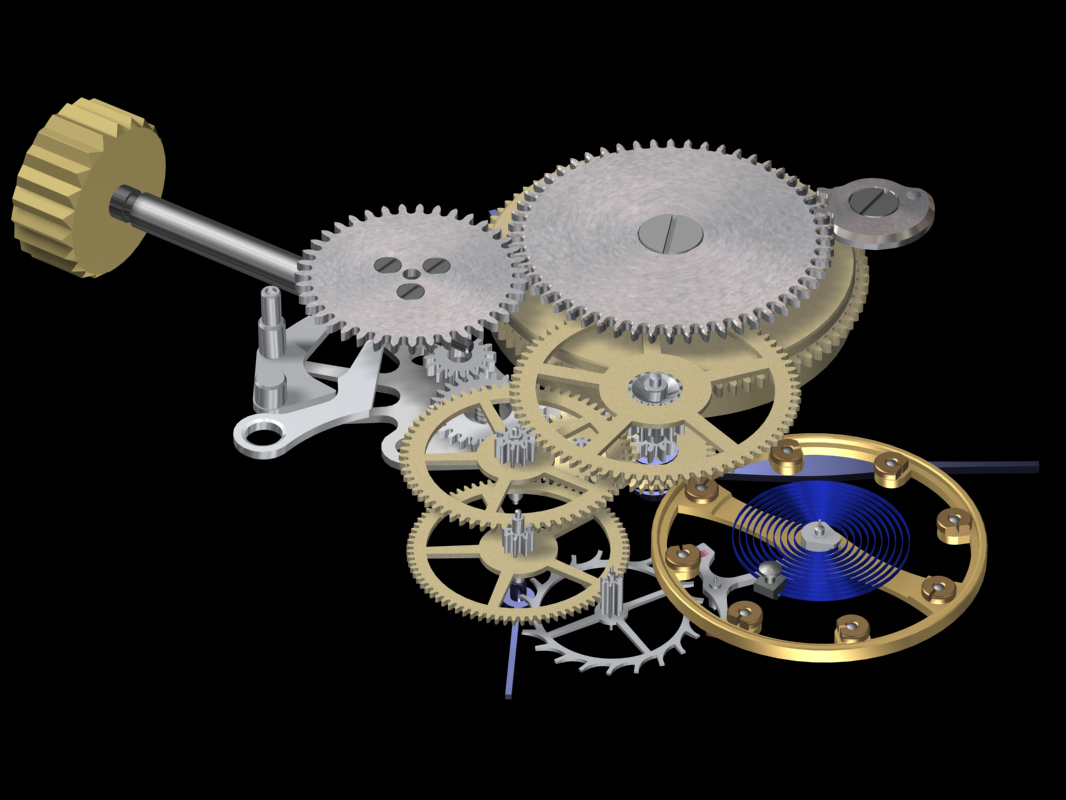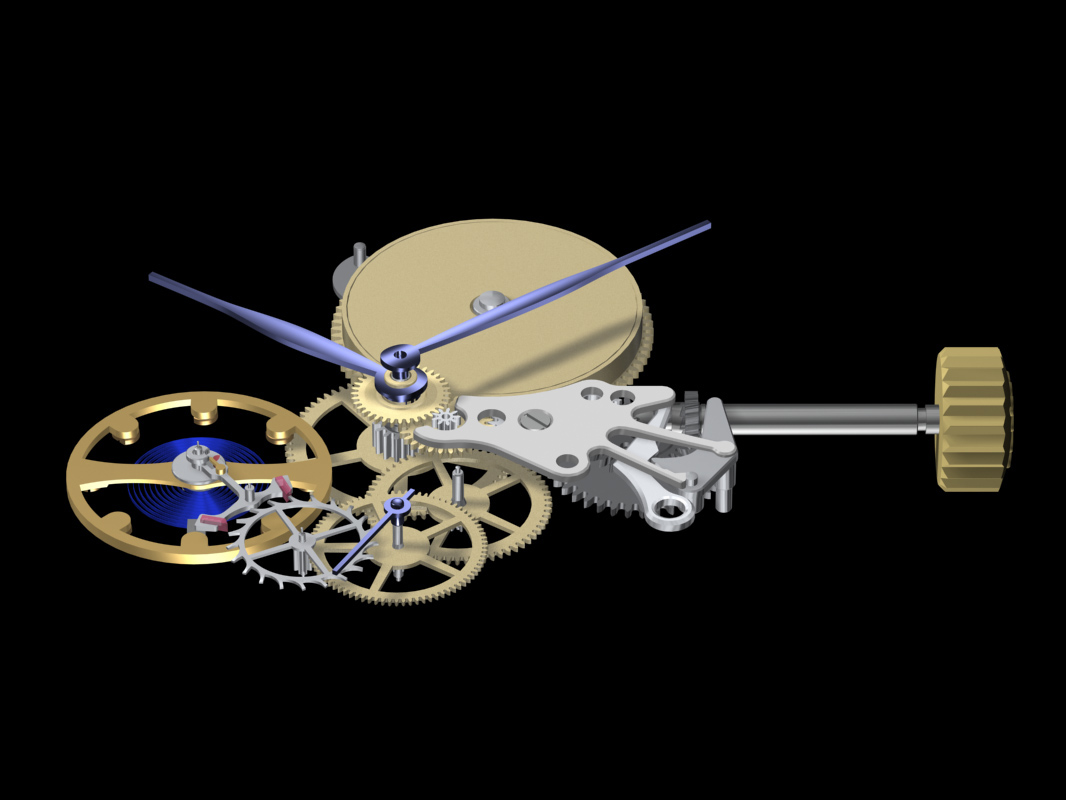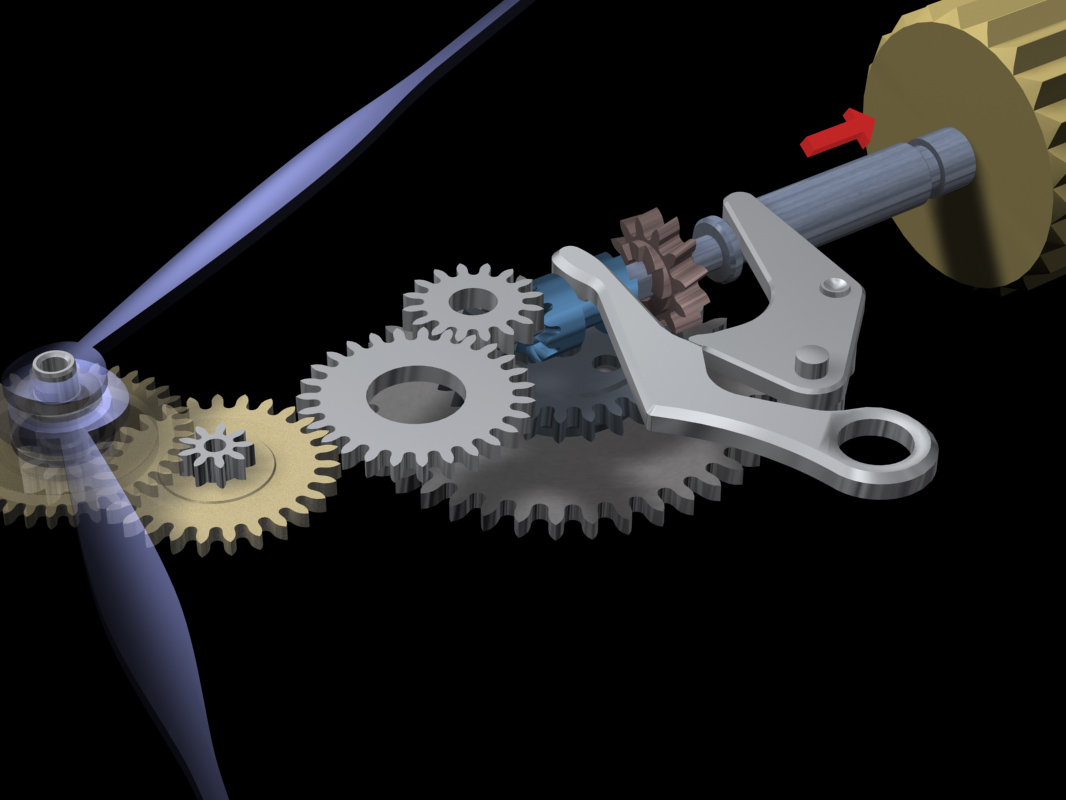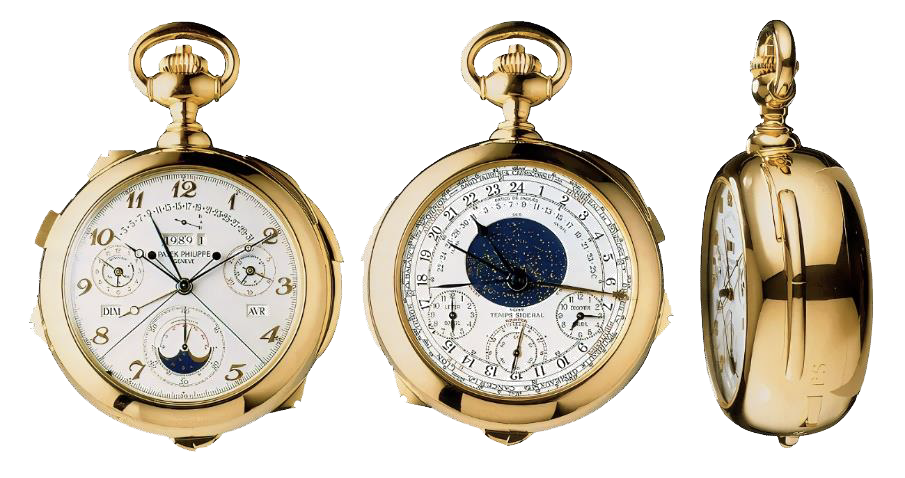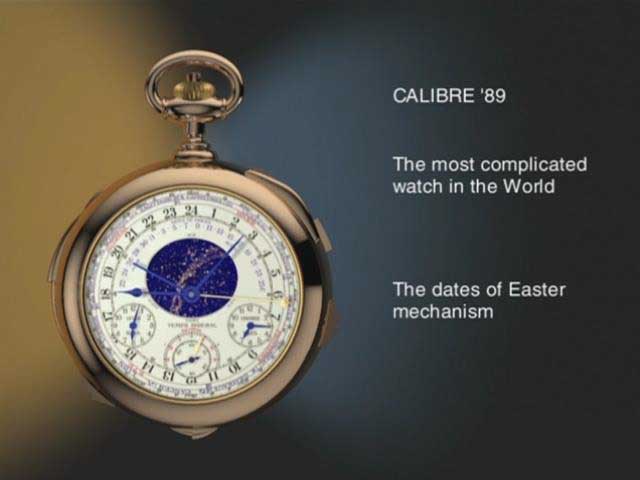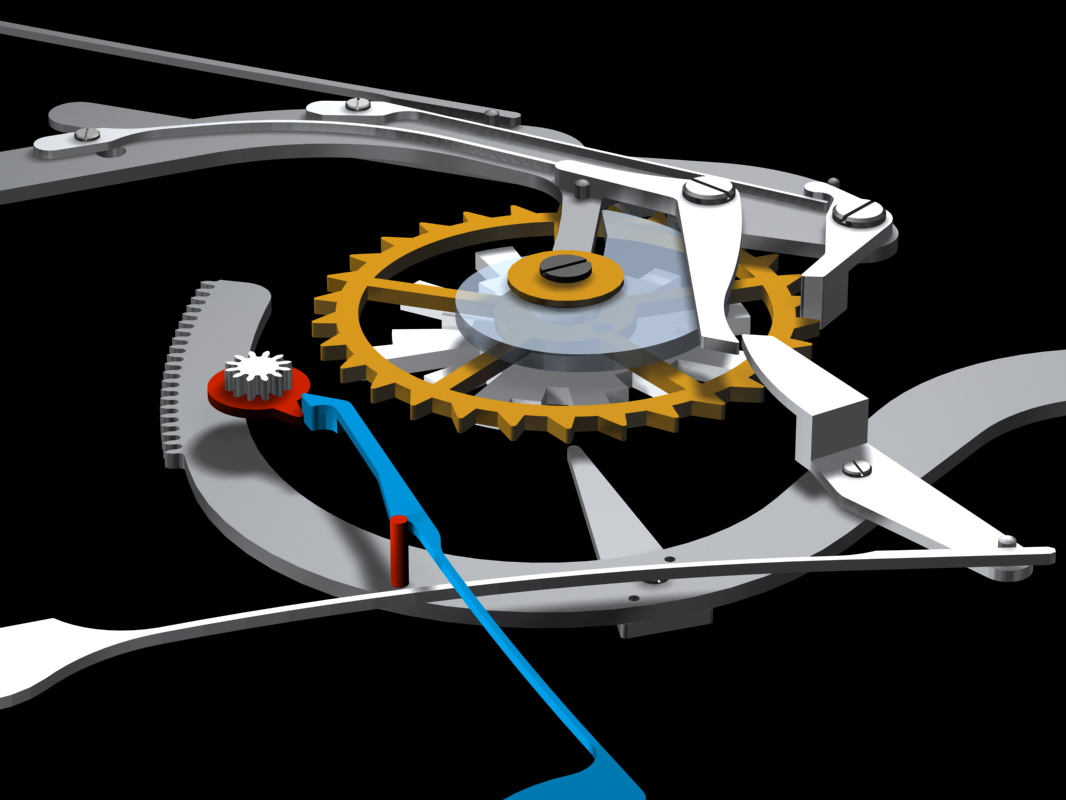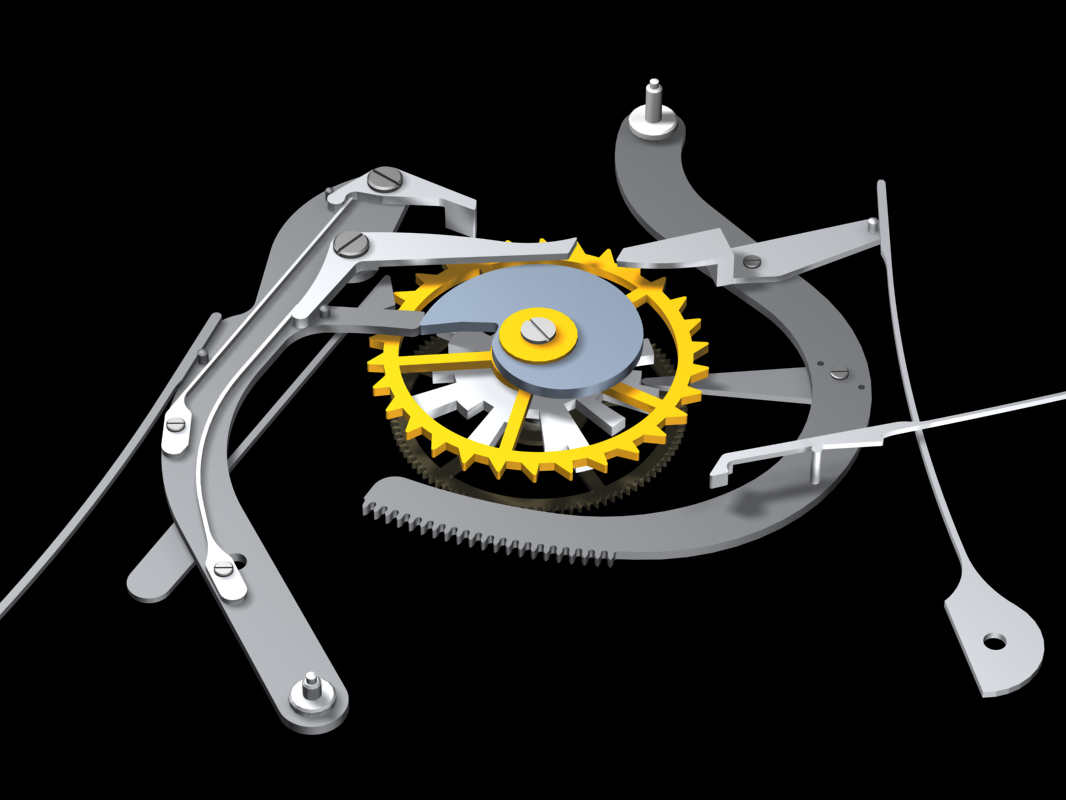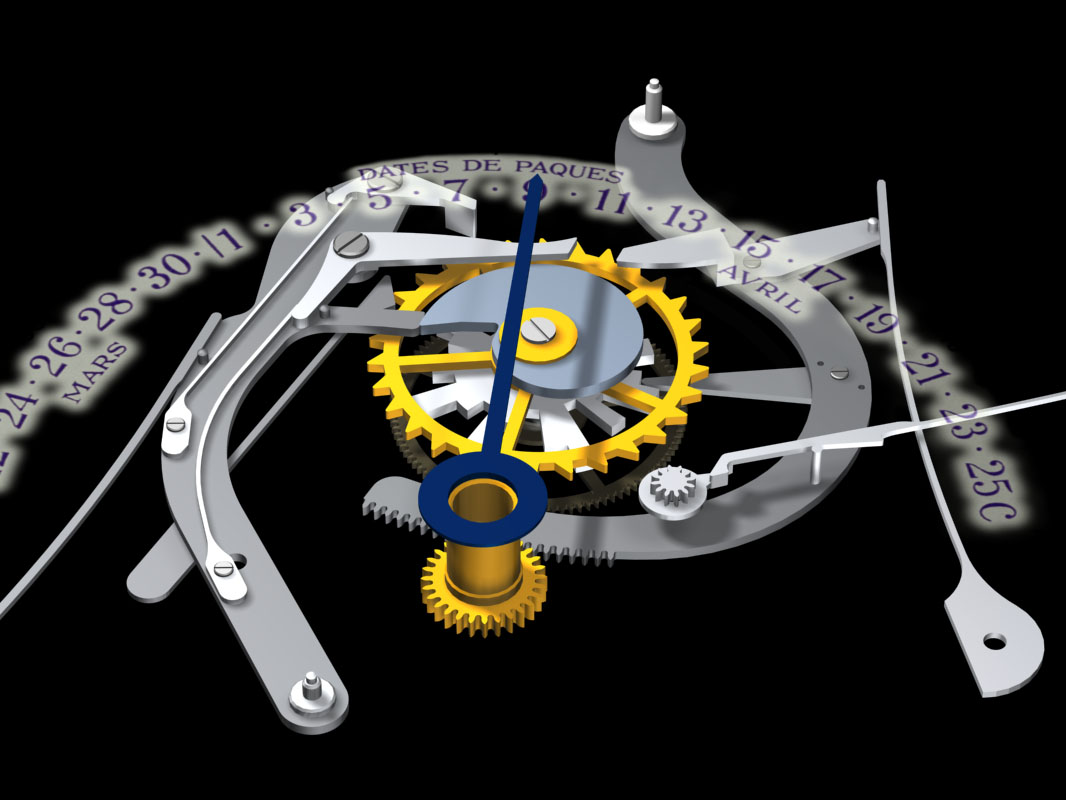Patek Philippe
Based in Geneva, Switzerland, Patek Philippe was founded in 1839 and is one of the oldest makers of luxury timepieces in the world. It is noted for designing and manufacturing some of the most complicated mechanical watches ever produced.
The Patek Philippe Museum – Clocks, Watches, Automata
The Patek Philippe Museum opened in Geneva in 2001; it contains a major collection of many of the finest clocks, watches and automata known – not just of their own manufacture, but major historic pieces too.
John Redfern was commissioned by the museum’s legendary curator Alan Banbery to produce animations of some of the very best of these. Visitors to the museum were able to see his animations alongside the watches themselves – a first for any museum.
The videos were made between 1996 and 2003, and designed for viewing on TV rather than computer screens and so are of low resolution by current standards (640 x 480). Nonetheless they showcase the brilliance of the work.
The videos can be purchased on DVD from the museum.
Further information about the museum can be found here →
The Rochat Brothers Singing Bird Pistol (1815)
The Rochat Brothers’ singing-bird pistol is one of the great mechanical and artistic automata; it has fascinated connoisseurs and collectors who have marvelled at its intricacy, sophistication and realism. It is among the most complex automata ever made and represent Swiss horology and artistic flair at their peak.
The realistic movements, the intricate mechanism and the refined decorative work are still astonishing today after more than 200 years. It is still in working condition.
The fluid birdsong is produced by a combination of bellows and a whistle; it is said to be based on the wood warbler, a bird common in the Joux Valley where the Rochat family lived before moving to Geneva.
The mechanism consists of wheels, cams and levers driven by a powerful spring, activated when the pistol is cocked and fired, as shown in this mesmerising video.
This was one of the most complicated projects I have undertaken, and it tested both my watch-making and animating skills. The mechanism, which is tightly packed in an elaborately decorated case of just 15 cm length, had to be dismantled and many repairs done before the drawing and modelling of some 500 components could begin. Only then could I start telling the story and animating the mechanism to explain all the movements of the bird and its song. The whole project took over 2000 hours.
John Redfern
The Moses Automata Watch (1815/20)
This gold and enamel openface quarter repeating watch depicts Moses hitting the rock at Meribah in the desert of Zin to produce water for the Israelites – a scene described in the Book of Numbers.
The complex automata show Moses hitting the rock twice with his staff, the rock opening to reveal a moving waterfall, followed by two people drinking the water. Underneath is a second automaton comprising two putti striking a bell in time with the chimes. The background of the Children of Israel in the Wilderness, watched over by the Eye of God, is a fine example the art of enamelling for which Geneva was famous in the early 19th century.
Just five “Moses” automata watches are thought to survive, all slightly differing in detail. This is the only such watch where Moses turns his head.
The difficulty of creating a mechanical movement capable a series of sequential actions and combining it with an enamelled scene of the highest quality reflects the outstanding skills of Swiss master watchmakers, casemakers, jewellers and enamellers of the period.
The video shows the watch in action, before explaining the detail of the cams, wheels and levers and how they function together and in sequence to produce these effects.
The Caliber 215 – An important manual wound wristwatch movement
The Caliber 215 movement was the cornerstone of a range of beautifully simple, manual wound watches, mostly under the Calatrava marque. Small, thin and very accurate, it is held to be one of the finest manually wound movements ever produced.
It was the first Gyromax-equipped movement to run at 28,800 beats per hour.
The video shows different aspects of this well-known model.
This video is also shown in the section How Watches Work →
John was an exceptional and talented craftsman… [This was] the first time that non-watchmakers could appreciate the marvel of a Patek movement.
Alan Banbery, as quoted in Collectability
The Ref. 3940 wristwatch with Perpetual Calendar
With the widespread introduction of cheap, accurate quartz wristwatches in the 1970s and 80s, the Swiss luxury watch industry was in trouble. The belief that the mechanical watch was becoming obsolete meant that investment in quality mechanical timepieces virtually stopped.
This was the world in which the ref. 3940 was launched in 1985. It was a crucial decision because the watch was both highly complicated and planned to be produced in volume by Patek Philippe as part of its main collection. It was a significant vote of confidence by the company in the future of quality mechanical watchmaking.
And the timing turned out to be perfect. The market was again starting to discover the value of mechanical watches. Almost all watches today keep good time, but few watches convey so much about the qualities of craftsmanship, beauty and excellence.
It remained in production for 22 years.
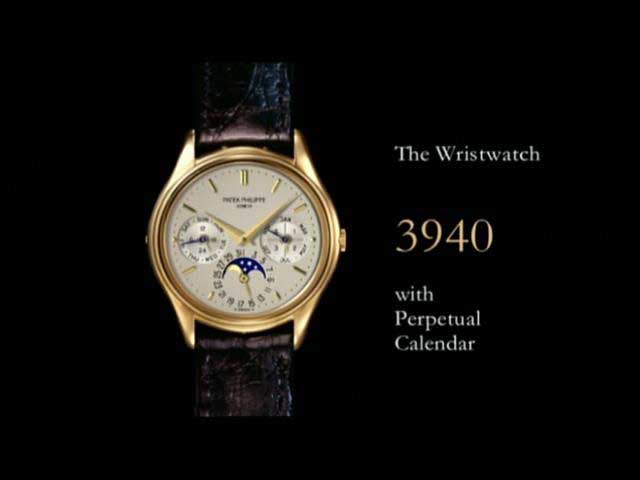
The ref. 3940 wristwatch with perpetual calendar, 1999
Caliber 89 – one of the most complex mechanical watches ever made
When launched in 1989, the Caliber 89 was the world’s most complicated portable mechanical timepiece with 33 Complications, an achievement unmatched for over 25 years.
It is an open-faced astronomical clock watch with two main dials, front and back. It has 33 complications which fall into five main categories: timekeeping, the calendar, the chronograph, the chime and the operational functions.
It has 24 hands, 2 dials, 129 jewels, and 1,728 individual parts.
In addition to the complex calendar functions, a tourbillon escapement and an astronomical sun hand, the watch displays the date of Easter every year. These functions are controlled and set by 12 external slide-pieces, push-pieces and winders.
The 126-jewel movement is driven by a single mainspring barrel and a tourbillon regulator. Two other mainspring barrels power the chime and the alarm.
The escapement is of the straight-line, Swiss lever type and the gold balance wheel vibrates at five times a second.
The hours and minutes of mean time are recorded by blued-steel hands. A gold independent hour hand can be moved forwards in increments of one hour enabling a traveller to adjust his watch for different time zones without advancing the minute hand.
- Day of the month
- 12-hour recorder
- Day of the week
- Hour of second time zone
- Moon phase display
- Winding crown position indicator
- Century decade and year displays
- Leap year indicator
- Power reserve
- Month
- Thermometer
- Date of Easter
- Time of sunrise
- Equation of time
- Star chart
- Sun hand
- Time of sunset
- Split second hand
I had the early-prototype mechanism in my studio to work from, and spent many enjoyable hours at Patek Philippe with M. Paul Buclin, the master watchmaker responsible for finishing and putting the watch together. He spoke no English, my French is very poor, but the love of what we were doing transcended that.
John Redfern
The Dials
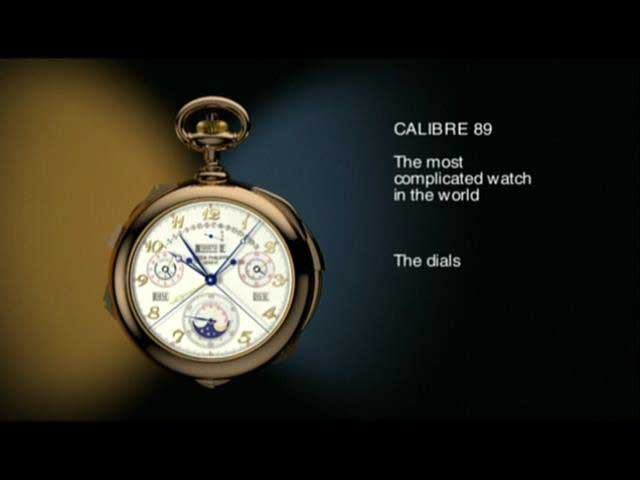
Caliber 89 – Dials and Hands, 2000
The Caliber 89 has two main dials, 6 subsidiary dials, 4 text windows and multiple hands to display the many complications listed above. The watch has two faces each approximately 8cms in diameter and the multiplicity of features appearing in these small spaces can initially be daunting. This short video takes you through the various complications to show how they are displayed.
The Date of Easter
Easter is the first Sunday after the first full moon on or after March 21st so it can only occur between March 22nd and April 25th. While this sounds simple as there are only a limited number of possible Sundays in any given year, it means reconciling lunar and solar time for each year, a pattern that repeats only every 5.7 million years – beyond the scope of any mechanical watch. Easter last occurred on March 22nd in 1818 and won’t occur again on that date until 2285, a span of 467 years.
Patek Philippe solved the problem by creating a mechanism covering 30 years; at the end of that time the controlling wheel would be replaced to cover the next 30 years, and so on.
For a fuller discussion of the Easter problem, see this article from Hodinkee.
Solar Time vs. Sidereal Time
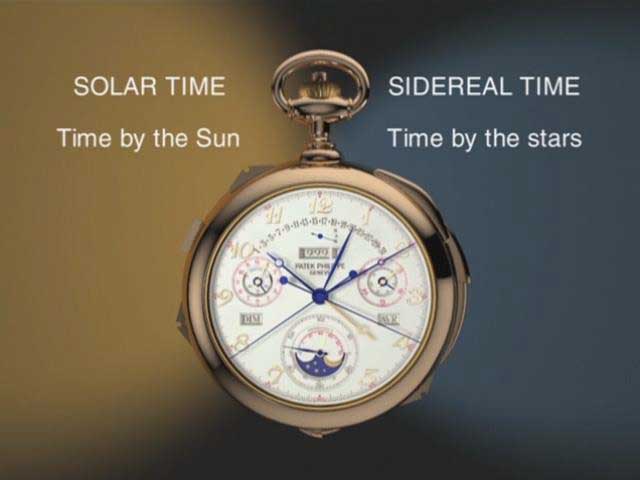
Caliber 89 – Solar time vs Sidereal tim, 2000
The Earth spins on its axis as it rotates around the sun. Solar time takes the sun as its reference point; the time taken for the Sun to appear in the same position from one day to the next we call 24 hours and set our watches to it.
But the Earth also rotates around the Sun. Sidereal time uses a distant star as a reference; the star appears in the same place roughly 4 minutes earlier every day according to our watches, due to the Earth’s constantly changing position as it moves around the Sun.
Sidereal time is important for astronomers and for navigation.
This video explains the difference.
All Patek Philippe videos © Patek Philippe Museum


